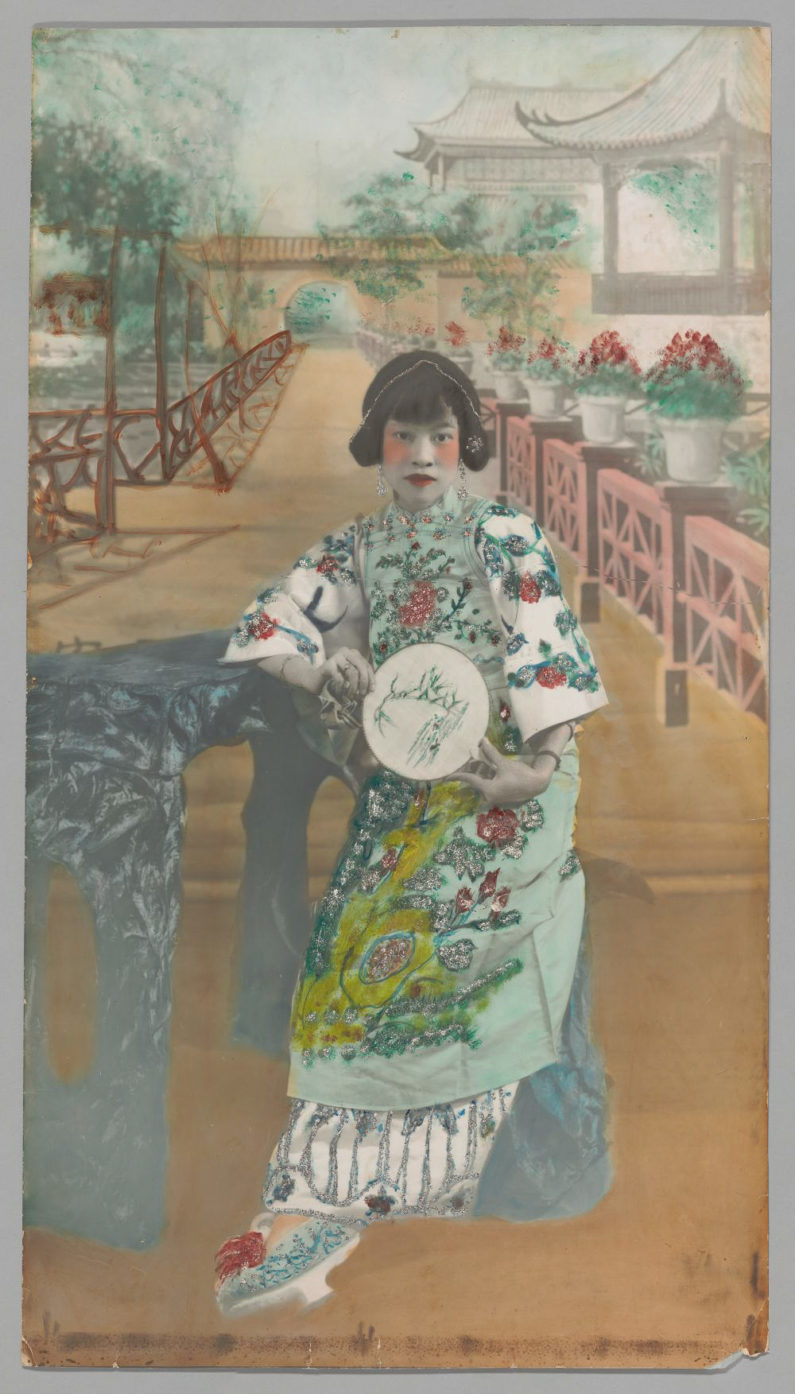Stanford’s innovative program advancing the arts of the American West returns
Responding to enthusiasm for the ArtsWest Initiative, the Bill Lane Center for the American West presents another year of public programming.
Encouraged by standing-room-only attendance at last year’s ArtsWest public programs, the Bill Lane Center for the American West is continuing its series that celebrates and explores the rich cultural legacy of the region.

This hand-colored portrait shows an actress in traditional Chinese theater costume. (Image credit: May's Photo Studio, Stanford Department of Special Collections and University Archives.)
The ArtsWest Initiative builds on Stanford’s rich humanities legacy, and specifically the momentum surrounding the arts. The goal of the initiative is to spotlight the contribution of the arts and humanities in the American West. It leverages the excellence and expertise found on campus in the academic departments to emphasize the contributions of American West-based artists, writers and cultural thinkers that make the region a fertile ground for global creativity and artistic vision.
Lane Center Director Bruce E. Cain outlined this year’s series: “We are planning three novel programs that touch on a diverse set of topics that demonstrate excellence in artistic expression in the face of adversity: a Chinese-owned photography studio in San Francisco’s Chinatown during the 1920s; the inspirational role that women artists contributed to the development of a modern Western art style as seen through the works of Georgia O’Keeffe to Kara Walker, and the march for gender parity in the arts; and depictions of the contemporary U.S.-Mexico borderlands as expressed in art, literature and music.”
The first lecture of this year’s ArtsWest series will be presented by Marci Kwon, assistant professor of art and art history, at 4:15 p.m. on Nov. 30. Kwon will discuss photographs taken in May’s Photo Studio, the first Chinese-run photography studio in San Francisco’s Chinatown, that are now part of Stanford Libraries’ Special Collections. Stanford doctoral candidate Yinshi Lerman-Tan curated a pop-up exhibition of a selection of the photos that will be on view at the lecture.
ArtsWest aims to highlight the rich cultural inheritance and innovative trends that abound in the American West. Bill Lane, whose gift endowed the Lane Center, was the publisher of Sunset Magazine, a magazine that captured a Western sense of style and design. ArtsWest continues in this tradition by promoting public events and exhibitions that focus on the Western brand and imagination.
Marc A. Levin, a researcher at the Lane Center, is responsible for shaping the theme and planning the ArtsWest programing. A contemporary art collector in San Francisco, Levin deploys his art world network to recruit speakers and develop ideas to benefit Stanford.
Cain gathered a faculty advisory committee to help guide ArtsWest programming decisions but relies on Levin to implement the vision. According to Levin, “Our programs mix museum curators, gallery owners, artists, scholars and even advocates such as the Guerrilla Girls (a group of feminist artists) to explore issues, ideas and icons taken from the Western arts playbook.”
A strong first year
The popular reception of the first year’s programs, two on campus and one at the Minnesota Street Project in San Francisco, serves as evidence for the strong community interest in high quality, continuing education opportunities in the arts and humanities. The first year’s programs highlighted the contributions of San Francisco-born writer, photographer and social activist Jack London; Western scholar of American art and chair of Stanford’s Department of Art and Art History Alexander Nemerov; and Nobel Prize-winning writer and former Stanford student John Steinbeck.
The Jack London program captured national attention via broadcast on C-SPAN. The London and Steinbeck programs offered pop-up exhibitions of manuscripts and personal items owned by the writers, include the typewriter on which London composed Call of the Wild in 1903.
Cain reflects on the first year of ArtsWest: “Last year the three programs focused on themes of marginalized peoples as seen through their craft. Jack London on the poor and underclass, Alexander Nemerov discussing his aunt Diane Arbus’ photographs of the developmentally disabled, and John Steinbeck on the disappearing environment and its impact on indigenous peoples living in the West.”
Looking ahead, Cain said, “This year’s programs are about art produced under adversity. We will look at the historic ethnic Chinese artistic and cultural experience in San Francisco’s Chinatown, how art and music shape life and expression on the U.S.-Mexico border, and the accomplishments of Western women artists during the last century and current institutional strategies for advancing talented women artists on the West Coast.”
Western land and life
Founded in 2005, the Bill Lane Center for the American West is dedicated to advancing scholarly and public understanding of the past, present and future of western North America. It supports research, teaching and reporting about Western land and life in the United States, Canada and Mexico. The center is also deeply engaged in exploring digital mapping, spatial history and analysis, data analysis and visualization, multimedia storytelling, social media and collaborative research and teaching using new digital tools. Efforts are focused on three broad areas of study: history, arts and culture; environment and energy; and Western governance and policy.
Outcomes from the Lane Center’s areas of study include papers, publications, articles, videos and reports – all advancing a better understanding of the people and culture of the American West.
One goal of ArtsWest is to bring “Stanford to the city” by conducting programs in San Francisco that will broaden the reach of the center and elevate public education on the arts for new audiences. All programs are free, open to the public and supported by university donors.
